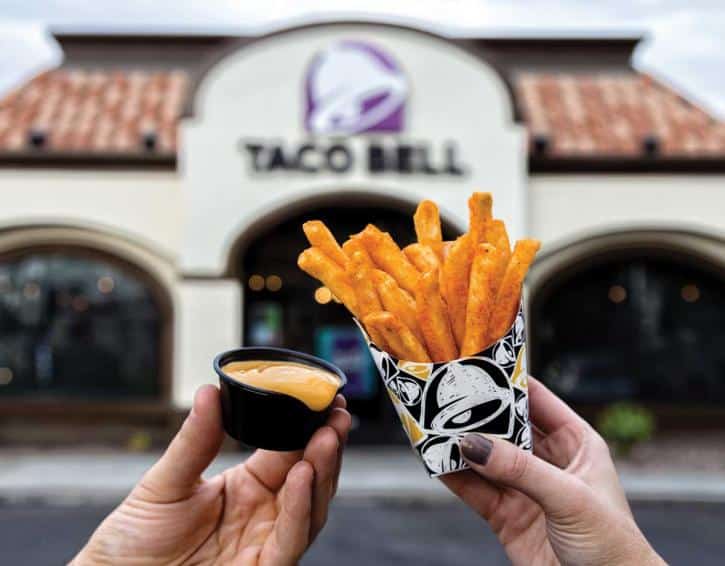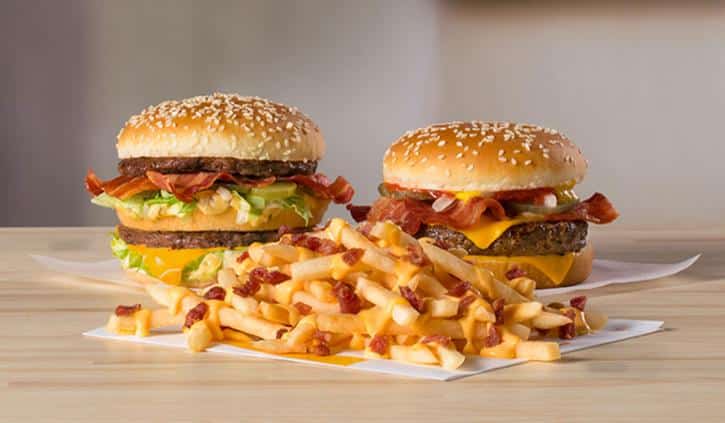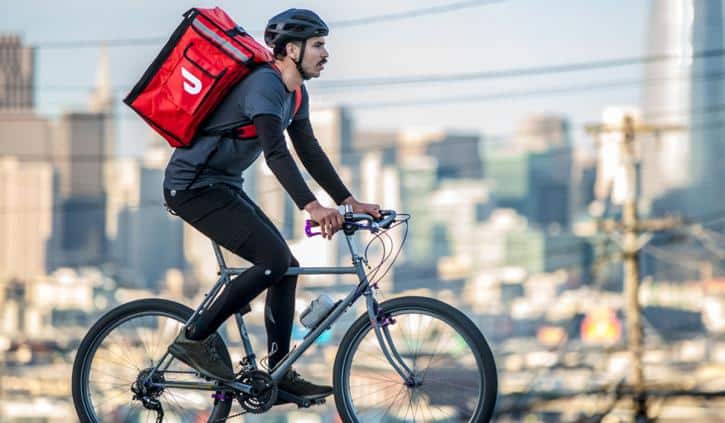











Trying to keep pace
Trends and changes come fast and furious in the quick-service world, and it looks like they will not slow down in 2019. From increased menu diversification to delivery expansion, contrasted with potentially slowed growth in terms of unit numbers, the new year promises new opportunities, both in terms of offering more to consumers while streamlining operations to keep companies in the black. The key to this equation is balance.
Developing a fever for foreign flavors
As America embraces its multi-cultural mix more and more, our food offerings are expanding in many directions, including the recent rise of Korean, Filipino, and Persian cuisines. “You see this with ramen concepts that are popping up all over the place, especially bi-coastally, looking to making those more inland,” says Daniel Boutarel, managing associate at the New England Consulting Group. “You have flavors and ingredients from Africa, from the Middle East that have been progressively gaining importance, but we think that will really pop up this year. Filipino food is another example of that.”
Plant-based offerings continue to grow
From cauliflower wings to broccoli bites, chains like Wendy’s using fresh avocados, more guacamole, and root vegetables like yuca, veggie items are in. “There really is this plant-based movement happening, not just for a healthier way, but to bring more variety and texture,” says Liz Moskow, culinary director at the Sterling-Rice Group. “I’ve been seeing a ton of root vegetables, and that is on the heels of the hero ingredient of yuca. I have been seeing yuca fries on menus beyond the Pollo Tropicals of the world, and that’s really interesting.”
Fries are experiencing a rebirth and resurgence
While many chains are offering alternatives to classic fries with things like yuca, tempura, and fried green beans, French fries themselves are offering competition with versatile variations. Taco Bell recently offered nacho fries, for example. “I think we’re going to start seeing tots or fries topped with interesting, sensationalistic things to drive Instagram photos,” Moskow says. “Anything from tons of bacon to pork products to crumbled and melty, oozy cheese that’s pull-able, kind of riding on the heels of poutine. Borrowing from that and bringing those [in] extra hearty size will also drive up the price point of side offerings.”
We still crave our coffee
Starbucks has gone 100 percent nitro. Cold brews are on the rise—McDonald now has its McCafe Cold Brew Coffee and Dunkin’ just rolled out its Energy Cold Brew drink. Cascara, aka coffee cherry tea, is percolating in popularity, as are sweeter and creamier drinks. “When I was growing up [in the business], I represented Maxwell House, General Foods, and Kraft,” says David Stone, managing partner at the New England Consulting Group. “We never in our wildest dreams, because we felt we were brilliant, ever thought about the world of coffee evolving the way it has. The coffee market is just booming. It’s probably up at least 5 percent at least a year, which is just stunning.”
Flourishes for fun and profit
Whether it’s a special space or crust or a sprinkle, little flourishes to tease the palette and provide variety look set to become more popular and make things interesting. “Like a balsamic honey glaze or an overly spicy ‘I dare you to try this’ addition,” Moskow says. “Even the McDonald’s of the world could benefit from some of that.” Such extras could allow customers to experiment, “but also allow them to stay in their safe place. Say there’s a fried dipping sauce—maybe it doesn’t cost anything or it’s just a little extra fee. You can experiment and go back to your ketchup and there was no harm, no foul. I think that’s a cool way that [chains] should and probably will be innovating a little more this year.”
As offerings expand, chains may scale back
“I think we’re going to continue to see more and more store closures,” says RJ Hottovy, senior restaurant analyst for independent research and data provider Morningstar. “Labor costs continue to be very pervasive and the cost of making all these changes, whether it be technological or operational improvements, is going to be very costly for a lot of restaurants. In a lot of cases, it makes sense to start from scratch—to close some underperforming locations and modify things from there. I think we’re going to see store closures—at least 1 percent in this coming year, if not more. Some of it will just be because some concepts go out of business. But otherwise, restaurants [will be] closing underperforming stores and opening up better optimized stores for what consumers are looking for.”
Taking your own order
As rising labor costs and a tight labor market inspire restaurants to deal with an economy of means, self-serve kiosks and tablets on the table will proliferate. “If you have less employees or you’re not able to afford many employees, you’re not going to have as many table touches as you historically would have had,” Boutarel says. “To compensate for that, being able to have the guests basically do all the legwork—look at the menu, place the order, and pay without having to interact with virtually anyone—would streamline that entire experience and help the kitchen. The other nice thing with the tablets and kiosks is that based on the time of the day and the day of the week, the restaurant would be able to hypothetically alter their prices or push specific messages or push specific menu items. That allows for a lot more messaging activity from the restaurant as well as a lot more information and customization opportunities from the guest perspective.”
Balancing experience versus convenience
Starbucks has recently been addressing this conflict. While the company is known for being a go-to location, they are also opening up the option of mobile pay. “All of a sudden you’re trying to serve two audiences at the same time,” Hottovy says. “You’ve got your experience audience and your convenience audience, and honestly when you do that, you don’t do either well.” That can lead to store congestion issues that employees have to work through. He adds that Starbucks have realized that “they can set up the smaller format [express] locations where it’s all about throughput. They’ve even talked about mobile-only type stores, which is something we’ve been advocating for a long time. Then you can keep these roasteries and nicer locations for the people who are looking for experience.”
Third-party delivery will grow and streamline
Third party delivery is no longer an option for many chains—it is essential, such as McDonald’s partnering with Uber Eats. “I think we will see consolidation and continue to see evolution in the delivery space,” Hottovy says. “GrubHub is starting to branch out into other restaurant services. There are similarities to how the travel mobile app market evolved. I know a firm here in Chicago that’s trying to do the Trivago for restaurant apps—delivery apps where you can go and see who’s got the quickest delivery time and who’s got the cheapest fee. We’re going to continue to see this space evolve in the next couple of years.”
On the flipside, Boutarel sees direct delivery as competing and co-existing in the same space. Public hotspots are one way to go. “Operationally, it’s a lot more complicated and more costly, a lot less turnkey than third party,” he says. “But the big advantages are being able to own your customer data, being able to ping them if they haven’t visited the store in a couple of weeks, and being able to drive sales for a specific day part or day of the week where historically it may have been a little weaker. We think that the smart money in 2019 will not only evaluate direct delivery, but be able to create a platform where both can coexist.”
The tech factor will continue its ascension
Beyond using third-party vendors, operators and owners will find more ways to get their grub out of their hub. Drones and driverless vehicles can augment the human element. But robots will also continue their gradual takeover in the workplace, such as Spyce Kitchen in Boston, which has more robotic woks than flesh-and-blood employees to prepare items like salads and grain bowls. Pizza and coffee makers, burger flippers, and more are here and more are coming. “The labor market is tight, and people in the fast foods are really suffering,” Moskow says, “so we’re going to start to see them employing technology in the making of the food and the supply chain that’s going to really make it a sustainable business going forward. We’re going to see more of those tech concepts in the next year.”
Cannabis is coming
Boutarel sees cannabis starting to shake up the market in 2019, specifically CBD-infused products and THC-infused products. “You’re seeing it right now in C-stores and the big legacy consumer package goods and healthcare companies,” he says. “We think that the smart money is going to be going into cannabis. CBD-infused will have some healthcare properties to it. Non-psychoactive formulas that we think could bring some novelty to the space and draw a lot of eyes and attention and traffic to the store as well.”
We may see the rise of fine casual
As Moskow observes, the lines between fast casual, quick service, and fine dining are starting to blur, competing with each other where before they used to stay in their own lane. “We’re starting to see that with a lot of the chef-driven concepts, the high end chefs moving into fast casual,” Moskow says. “I think we’re going to start seeing the testing of more concepts even at the store level, and to start seeing the C-stores try to innovate around food service. They’re already bringing in the specialty coffees. Where do you draw the line? It is even hard for the experts to figure out what that means anymore. It’s going to be more like fine casual. I think that’s where it’s moving, especially when they’re all trying to go after take out and delivery.”



